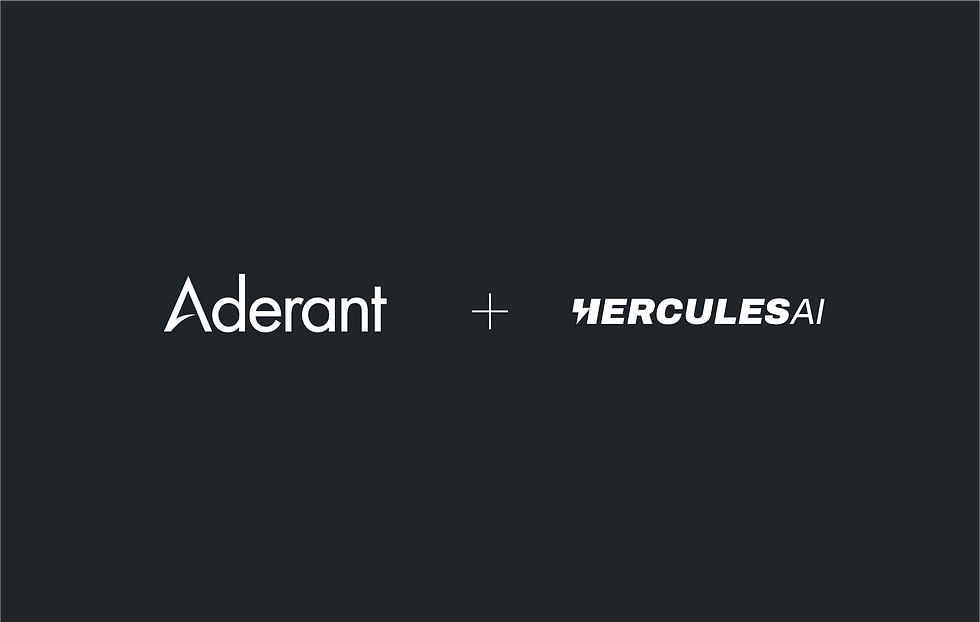Delegated Authority at a Crossroad: Why AI-Powered Modernization Is No Longer Optional
- rchoy1
- Jun 17
- 4 min read
Delegated Authority is now a victim of its own success; The scale of Delegated Authority has outgrown the systems built to manage it. What began as a simple reporting framework has evolved into one of the most operationally expensive and administratively burdensome parts of the insurance value chain over the years. Regulatory demands, data fragmentation, and inconsistent workflows have introduced friction into a model that was originally designed for efficiency.
In a fireside chat moderated by Andy Fenton, Alex Babin, CEO of HerculesAI, and Paul Bermingham, CEO of Ecliptic, explored the evolution of the Delegated Authority model, its current challenges, and the role of technology in reshaping its future.
Here are seven key questions pulled from the discussion about the current state and future direction of Delegated Authority:
1. How did a simple model become so complex?
Delegated Authority began as a streamlined model, but over the decades, increasing data demands and regulatory changes have layered on complexity. Disparate files in varying formats provided by various parties made data processing an administrative task that firms spend high resources, time, and effort.
2. How did the growth of data volume affect risk assessment?
Scaling exacerbates any inefficient business model, and Delegated Authority is no exception. It’s a massive global market, at almost 40% of Lloyd’s Gross Written Premium (GWP), and is still growing. But with growth comes the burden of oversight, validation, and reconditioning. These tasks strain existing workflows, increasing administrative costs and eroding profitability.
3. How significant is the economic drag from broken reconciliation workflows?
It’s huge. London alone processes 150,000 bordereaux files every month, spread across ~10,000 annual contracts with multi-year accounting. Thousands of people and robotic process automation (RPAs), both onshore and offshore, are dedicated to reconciliation, yet accuracy and efficiency remain elusive.
4. Why won’t more audits and templates fix the Delegated Authority model?
Adding more requirements to an already broken process doesn’t solve the problem; It compounds it. A new operational business model is needed as a better means of collaboration between the stakeholders in setting up, managing these schemas, and merging variable data from disparate parties.
As Bermingham puts it:
“We knew what the rules were for underwriting. We knew the policy wording and what claims to validate. But we forced all those checks onto MGAs and TPAs whose systems weren’t set-up to handle them. Now we can do that using new technology and support both the insurers and the insured.”
5. What value does AI bring to the table?
AI is delivering tangible ROI that’s measurable. For example, one of HerculesAI’s customers decreased the time of processing data from four hours to 40 minutes per file. The return on investment isn’t limited to time. AI generates value through:
Resource optimization
Cost reduction
Risk mitigation
Take bordereaux as an example: these files often contain hundreds of columns and thousands of rows. Processing them manually is slow, error-prone, and inefficient. AI analyzes every data point, identifies anomalies, and validates information with consistency and speed that humans can’t match.
AI unlocks new possibilities to:
Build trust across all stakeholders through accurate, validated data
Free up skilled professionals to focus on higher-value, strategic work
Enable scalability that was previously out of reach with manual or legacy systems
6. How does “standardization by design” work in practice and how is it different from “standardization by force”?
Standardization by force demands that all parties conform to a fixed format or system, regardless of their existing processes, tools, or data structures. While it may seem logical, it often fails in practice because businesses are diverse. Forcing uniformity too early in the workflow is incredibly difficult. Standardization by design happens at the end of the workflow, enabling each party to operate using their preferred formats and systems. AI then acts as the intermediary, ingesting varied inputs and transforming them in a clean, standardized output. This approach doesn’t require reengineering everyone’s process.
7. How can the insurance industry move forward?
There is an opportunity for AI to turbo-charge delegated authority and produce significant value. Currently, delegated authority is like having our workers manually cover holes in the boat with tape. We need to build more robust, automatic processes for long-term, allowing workers to focus on higher-value tasks. AI creates opportunities for the industry to build more trustworthy processes and allow for scalability in the way other industries achieved when they adopted technology.
Next steps
Explore the HerculesAI platform:
AI-workers for back-office operations, automating data extraction, transformation, and verification with speed and accuracy. Streamline insurance workflows to reduce costs, save time, and mitigate risk.
Explore Ecliptic Technology solutions:
Simplify complex process interactions and replace outdated business models with simple-to-use Insurtech solutions. Next-gen solution for rethinking how insurers, MGAs, and TPAs collaborate, validate, and build trust in insurance ecosystems.
Watch the full video
Gain more insights on the history and future of Delegated Authority in the full video. Find answers to questions such as:
Why has the Delegated Authority model become so fragile today and how has it evolved historically?
What mistakes do industries make when trying to fix fragmented data?
How do you separate real AI value from hype?



